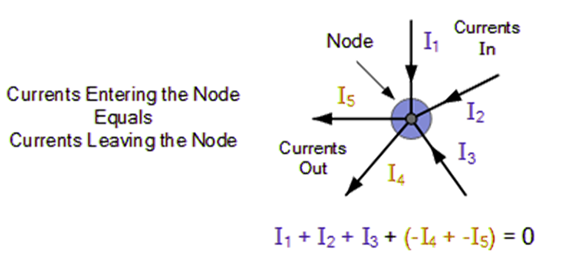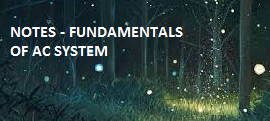Basic Electrical Engineering
Previous questions only
PART A -2 Marks Questions
1.Define potential difference and write its unit?(2)
The difference in the potentials of two charged bodies is called potential difference. Unit of PD is. Volt
2. Define the resistance and write its unit?(2)
The opposition offered by a substance to the flow of electric current is called resistance. Unit is Ohm.
3. Define Electric Potential and write its unit?(2)
The capacity of a charged body to do work is called electric potential(V). Unit is Volt. V=W/Q
4. Define Specific resistance of a material / Resistivity? (2)
Specific resistance is defined as the resistance offered per unit length and unit cross-sectional area when a known amount of voltage is applied.
R=ρ l/A , ρ=specific resistance, l=1m, a=1m, then R = ρ
5.Give the relation between voltage current and resistance in an electrical circuit? (2)
Ohm’s law defines the relationship between the voltage, current, and resistance in an electric circuit, I=V/R. The current is directly proportional to the voltage and inversely proportional to the resistance.
6. Define temperature coefficient of resistance? (2)

The “alpha” (α) constant is known as the temperature coefficient of resistance and it is the resistance change factor per degree of temperature change.
7.Write equation for effective resistance of a parallel resistance combination.?
equivalent resistance of resistors in parallel, 1 / R = 1 / R1 + 1 / R2 + 1 / R3 +..
8.State kirchhoff’s current law ?
Kirchhoffs Current Law or KCL, states that the “total current entering a junction is exactly equal to the current leaving the junction, as no charge is lost within the node.
9. Mention magnetic flux density?
The magnetic flux density is the flux per unit area of the magnetic core. flux density, B = Flux / area.
10. Write the equation for energy stored in the inductor ?
E = 1/2 LI2
11. State Lenz’s Law?
According to Lenz’s law, the direction of current induced in a coil is always such as to oppose the change in magnetic flux responsible for its production.
12. Give any two application of electromagnet?
Electric bells, Generators, Transformers, Relays, Motors
13. Give any two factors affecting capacitance of parallel plate capacitor?
The area of the plates, The distance between the plates.
14. Define mmf ?
The magneto motive force is the product of current and number of turns. mmf = N x I
15. Define the reluctance and write its unit?(2)
The opposition that the magnetic circuit offers to flux is called reluctance. Unit is Ampere turns / weber.
16. Define capacitance?
The ability of a system to store an electric charge is called capacitance. Unit is Farad.
17. State condition for maximum power transfer’?
Maximum power transfer theorem states that the DC voltage source will deliver maximum power to the variable load resistor only when the load resistance is equal to the source resistance. ie, RL=RTh
18. Define the break down voltage / Dielectric strength?
The maximum voltage which a unit thickness of a dielectric can withstand without being punctured by a spark discharge is called break down voltage / dielectric strength of a material.
19. Define self-inductance?
Self induction is the production of an electromotive force in a circuit when the magnetic flux linked with the circuit changes as a result of a change in current in the same circuit.
20. Write two methods for changing capacitance of a parallel plate capacitor?
- decreasing the distance between the plate.
- increasing the Cross section Area.
21. Give the absolute permeability of free space?
4π x 10-7 H/m
22. Write the equation for energy stored in the capacitor ?
E = 1/2 CV2
23.Draw the atomic structure of Copper and Aluminum atom. Atomic number of copper 29 & Al is 13, Atomic weight of copper 64 & aluminum 27?

24. List any two examples of Semiconductor?
Germanium, Silicon, Carbon
25. Define Current and write its unit?
The flow of free electrons is called Electric current / Moving charged particles make an electric current. The strength of the electric current I is the rate of flow of electrons. ie, The rate of flow of charges is called current.
Current, I = Q/ t = ne / t
Unit of current is Coulomb/second or Ampere.
26. Define One Ampere?
One ampere of current is flowing through a wire if at any section one coulomb of charge flows in one second.
PART B- 6 Marks Questions
1. Compare magnetic circuit and electric circuit?
2. State and explain laws of resistance?
The laws of resistance states that the Resistance “R” offered by a conductor depends upon following factors,
R =ρ L /A, ρ= resistivity, L= length of conductor, A= area of conductor
- The Resistance “R” is directly proportional with it’s length “L”
- The Resistance “R” is Inversely proportional with it’s Cross Sectional Area: “A”
- The Resistance “R” is dependent on the Nature of the material.
- The Resistance “R” is dependent on the Temperature of the conductor.
3. State and explain Kirchhoffs current and voltage law?
Kirchhoff’s First Law (current law) :Kirchhoffs Current Law or KCL, states that the “total current entering a junction is exactly equal to the current leaving the junction, as no charge is lost within the node.
Kirchhoff’s Second Law ( voltage law) : The voltage around a loop equals to the sum of every voltage drop in the same loop for any closed network and also equals to zero
4. State and explain laws of electrostatics?
Coulomb’s law in electrostatic states that a charge at rest q1 applies a force F on the other charge q2, also at rest, which are separated by a distance r such that the force is directly proportional to the product of both charges and inversely proportional to the square of the distance between them.∴ F ∝ q1q2 / r2
5. Dfferentiate statically and dynamically induced e.m.f?

6. State Faradays laws of electromagnetic induction?
Faraday’s First Law of Electromagnetic Induction : Whenever a conductor is placed in a varying magnetic field, an electromotive force is induced. If the conductor circuit is closed, a current is induced which is called induced current.
Faraday’s Second Law of Electromagnetic Induction : The induced emf in a coil is equal to the rate of change of flux linkage. e = N dΦ/dt
8. Derive an expression for energy stored in a capacitor?

9. State and explain Norton’s theorem ?
Norton’s Theorem states that it is possible to simplify any linear circuit, no matter how complex, to an equivalent circuit with just a single current source and parallel resistance connected to a load.

10. Derive the equation for effective resistance whcn the resistance Rl, R2″ R3 are
connected in parallel?

PART C- 15 Marks Questions
1.State and explain super position theorem?(7)
The superposition theorem states that in any linear bilateral network that consisting of two or more independent sources, current through (or voltage across) an element is the algebraic sum of the currents through (voltages across) that element caused by each independent source acting alone with all other sources are replaced by their internal resistances. explain with examples…..
2. Define:
(i) magnetic flux (ii) magnetic flux density (iii) magnetic field strength?(8)
magnetic flux : The magnetic flux in a magnetic circuit is equal to the total numbr of lines of force existing on the cross section of the magnetic core. Unit is weber.
magnetic flux density(B) : The magnetic flux density is the flux per unit area of the magnetic core. flux density, B = Flux / area.
magnetic field strength(H) : It is the magnetomotive force per unit length.. H= mmf/length, Unit is Ampereturns / meter.
3.State and explain Fleming’s left hand rule.?
Fleming’s left hand rule states that if the thumb,fore Finger and the middle finger are stretched mutually perpendicular to each other then the thumb represents the direction of force..the forefinger represents the the direction of magnetic field and the middle finger represents the motion or direction of the induced current.
4.Draw B-H curve and identify different regions?
Figure below shows a typical B-H curve for a ferromagnetic material. As can be seen from the figure below, it consists of three zones i.e. OA, AC and beyond point C. This B-H curve is known as magnetization curve / saturation curve

Initial zone OA is non linear while the zone AC is linear and beyond point C, it is again non linear. This non linear zone beyond point C is called Saturation region. It shall be noted here that tough OA is also non linear but in this zone the rate of change of B with respect to increase in H is increasing which means that increasing the value of H increases the magnetic flux density B rapidly, In saturation region, the rate of increase of B with respect to increase in H is decreasing (Just draw tangent at different point beyond C.
5. Define:
(i) Power (ii) Energy?
Power : The rate at which work is done in an electric circuit is called electric power.
Electric power : Workdone in electric circuit / Time = VI
Energy : The total work done in an electric circuit is called energy. Unit is kWh
Electrical energy = Electric power x time = VIt
4. Derive expressions for parallel plate capacitor in a uniform dielectric medium?







Recent Comments